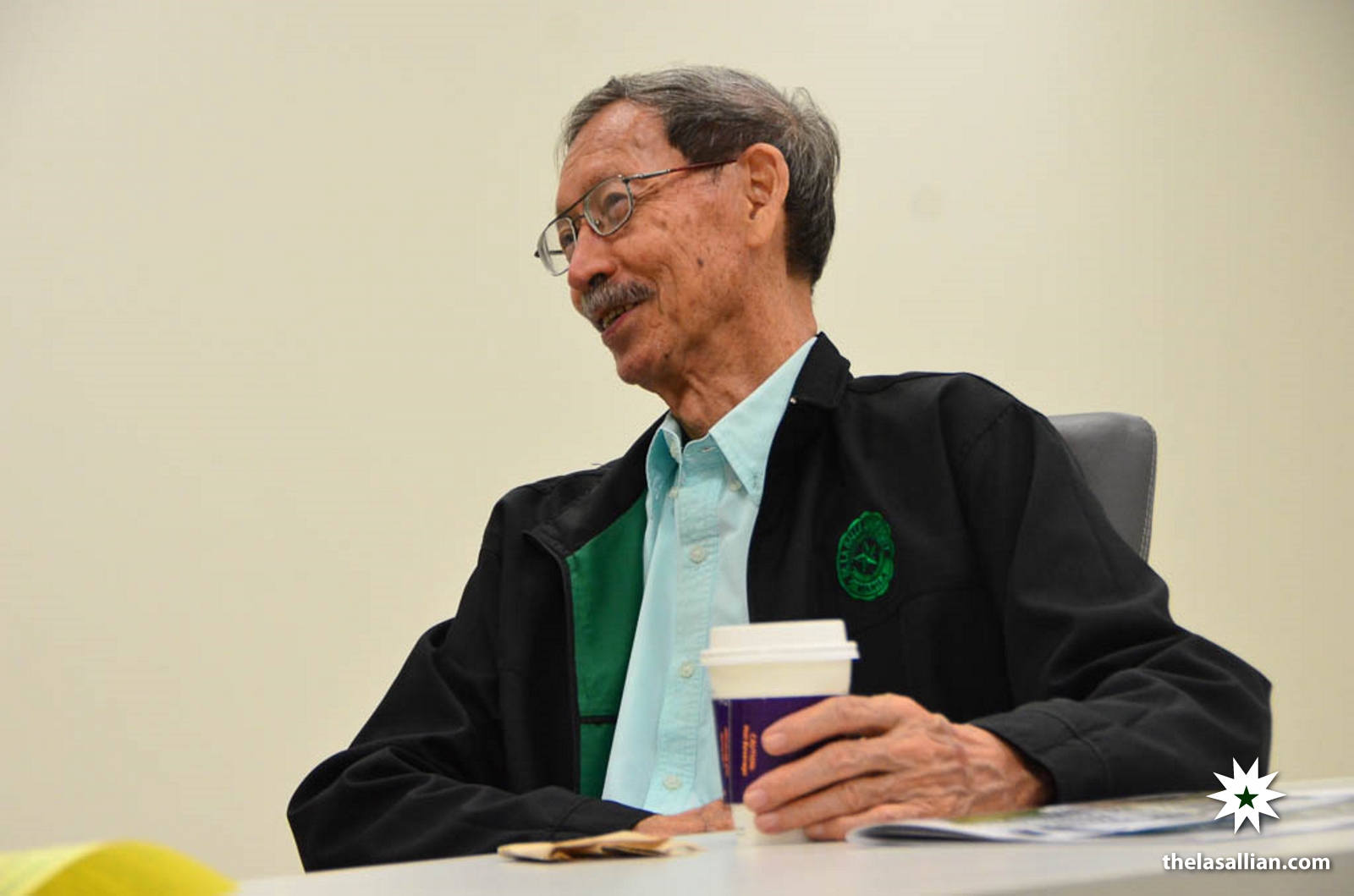“I think I was one of those who won the contest in naming The LaSallian. It was in the 60s. My submission was The Quiver, the thing that holds arrows. But it was The LaSallian that came out,” says Dr. Edgardo Gomez when we first introduced ourselves to him.
A proud alumnus of De La Salle University, the esteemed biologist became one of four who were recently conferred National Scientists of the Philippines, placing him alongside the likes of Bienvenido Nebres SJ, Ernesto Domingo, and Jose R. Velasco.
A Lasallian foundation
Dr. Gomez spent his early years under a Lasallian education—the roots of his academic excellence, as well as his interests in marine science.
It was in his sophomore year that he had come to love the field of biology, especially when he had his science classes under Br. Alfred Shields, FSC. His teacher is better known as the man who founded DLSU’s Biology Department, and whose name is honored today through the University’s Marine Station in Batangas.
He recounts his experience under the tutelage of Br. Alfred: “He took us on a couple of field trips, including the seashore. It was in those trips that I fell in love with marine life. I told myself, I think I’ll study marine life when I get older.”
And he eventually did go on to study marine life, but before he embarked on a life of science, he first started his journey in the liberal arts.
“When I was going through college, there were no science degrees yet in La Salle, so the guidance counselor told me to get a good liberal arts foundation, and then later on go for Master’s in Science,” he says.
He followed his guidance counselor’s advice, and after spending five years in La Salle, he would finish summa cum laude in his double degree of Bachelor of Arts in Social Science and Bachelor in Secondary Education, major in English, minor in Mathematics.
Despite spending most of his years serving as the director of the Marine Science Institute in the University of the Philippines (UP) Diliman, there’s no denying that the scientist has a fondness for his alma mater. He even goes on to share how relaxed he feels whenever he is on his old stomping ground.
“I was very thankful for the education I got here… That’s why every time I get invited to La Salle, I feel like coming home. It’s a good feeling,” he says.

Without the labcoat
So what does the scientist do in his spare time?
Dr. Gomez, aside from biology, also has an interest in history. After all, he has a Social Science and English degree under his belt.
He even reveals that in his college years, one of his favorite subjects was Asian History. His late college professor, Sir Waldo Perfecto, reinforced this interest of his.
But underneath this inclination towards differing interests is an undying love for reading books. He shares a recent experience with his reading habits: “My wife was commenting to me recently, saying, now you’re reading something from the humanities. You see, I was curious. There was a book sale in National Bookstore, and I saw this small book of short stories by Rabindranath Tagore. I never read anything from him before.”
He goes on to suggest reading some historical non-fiction books such as Guns, Germs, and Steel and Collapse by Jared Diamond.
This bookworm turned scientist is not just amazed by life under the sea, but is also delighted by it. “I usually like squid dishes. If I want something more high end, I like pelagic fishes, like blue marlin, tanigue, because the meat is more firm in marine fish than in freshwater fish, whose meat is too soft.”
Love for nature
The scientist is known for his research in the reproduction of marine invertebrates, culture of giant clams, and coral reef restoration.
But Dr. Gomez’s love for nature preservation does not only lie in marine life; it also extends to tree planting, specifically in urban greening. With a background in botany and physiology, Dr. Gomez was able to develop this interest.
What pushed him to pursue the field was the situation of cities after typhoons hit them. Upon several studies, he discovered that the trees in the cities are not the native types, which cause them to tumble down after a typhoon visit.
“Many of trees in Metro Manila are not native trees. Starting with acacia. Marupok yan sa bagyo. They are not native. They did not evolve in this climate. They are shallow rooted, tapos top-heavy sila.”
He even invites us to visit UP Diliman where he planted different types of plants like dalipawan that are suitable for the Philippine climate. He refers to this move as his ‘native trees advocacy’.
Word of the wise
“Do your homework but don’t be satisfied with it. Go laterally; read very broadly,” imparts Dr. Gomez to the younger generation.
For Dr. Gomez, his success as a scientist and as a person was borne out of his principles and attitude towards life. His sheer desire to excel in everything that he does is what brought him to where he is now. As he puts it, “I did not aim to become a National Scientist; I just worked to be a good scientist.”
